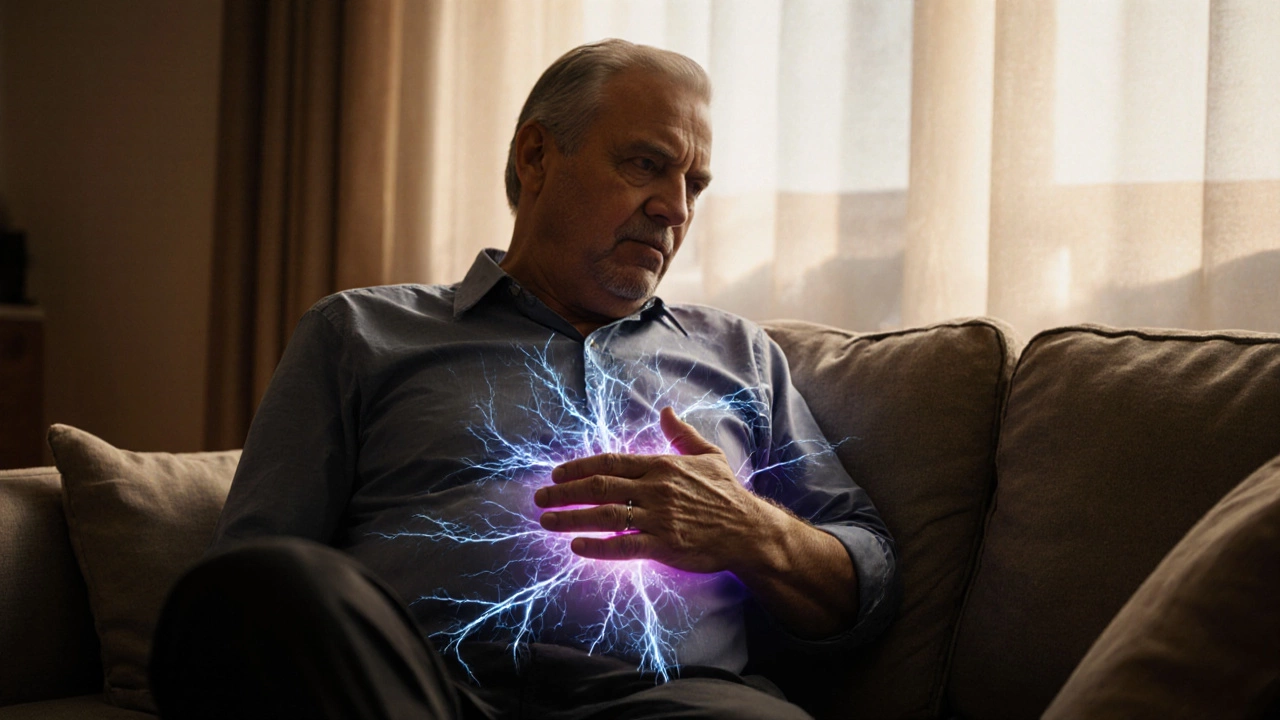Pain relief is the process of reducing or eliminating uncomfortable sensations caused by injury, disease, or chronic conditions. When it comes to chronic pain, finding the single most effective option feels like hunting for a unicorn, but a clear hierarchy emerges once you compare mechanisms, safety, and real‑world results.
Why chronic pain needs a different approach
Chronic pain lasts longer than three months and often persists after the original injury has healed. It triggers changes in the nervous system, turning normal sensations into constant alarms. Because the pain source is no longer obvious, treatments that work for acute injuries-like a quick ibuprofen dose-might fall short or cause side effects over time.
How we decide what’s #1
To crown a treatment as the top choice, we weigh four practical factors:
- Effectiveness: Does it reliably lower pain scores in clinical studies?
- Safety profile: Are serious side effects rare?
- Accessibility: Can most patients get it without specialist referral?
- Long‑term viability: Does it remain useful after months or years?
With these criteria in mind, three contenders dominate the market: non‑steroidal anti‑inflammatory drugs (NSAIDs), gabapentinoids, and structured physical therapy programs.
NSAIDs: The familiar first line
NSAIDs-including ibuprofen, naproxen, and diclofenac-work by blocking enzymes that produce inflammatory messengers. For many with joint‑related chronic pain, they can cut pain by 30‑40%.
Pros:
- Readily available over the counter.
- Fast onset (30‑60 minutes).
- Low cost.
Cons:
- Stomach irritation and increased ulcer risk.
- Potential kidney damage with long‑term use.
- Less effective for neuropathic pain.

Gabapentinoids: Targeting nerve‑based pain
Gabapentin and its cousin pregabalin are approved for conditions like diabetic neuropathy and post‑herpetic neuralgia. They calm over‑excited nerves by modulating calcium channels.
Pros:
- Good for neuropathic pain that NSAIDs miss.
- Generally well‑tolerated; dizziness and drowsiness are the most common complaints.
Cons:
- Requires prescription, so accessibility is lower.
- Potential for dependence if misused.
- May take weeks to reach full effect.
Physical Therapy: Moving pain away
Physical therapy uses exercise, manual techniques, and education to retrain muscles and nerves. Studies show a 45‑60% pain reduction for low‑back and osteoarthritis sufferers when therapy is combined with home‑based exercises.
Pros:
- Addresses root causes, not just symptoms.
- No drug side effects.
- Improves function and quality of life.
Cons:
- Requires time commitment and professional sessions.
- May be costly without insurance coverage.
- Benefits depend on patient adherence.

Other notable options worth a look
Even if they don’t take the #1 spot, these treatments add value to a multimodal plan:
- Cognitive Behavioral Therapy (CBT)-helps reframe pain perception and reduces reliance on medication.
- Transcutaneous Electrical Nerve Stimulation (TENS)-delivers low‑level electrical currents to interrupt pain signals.
- Acupuncture-ancient technique that may stimulate endogenous opioids.
- Topical analgesics (e.g., lidocaine patches, capsaicin cream) for localized discomfort.
- Mindfulness meditation-low‑cost method to lower stress‑induced pain amplification.
- Regular exercise routines-walking, swimming, or yoga-to keep muscles flexible and release endorphins.
Side‑by‑side comparison
| Treatment | Mechanism | Typical Use Cases | Pros | Cons |
|---|---|---|---|---|
| NSAIDs | Blocks COX enzymes → reduces inflammation | Joint pain, musculoskeletal aches | Fast, OTC, inexpensive | GI irritation, kidney risk |
| Gabapentin (gabapentinoids) | Modulates calcium channels → calms nerves | Neuropathic pain, post‑surgical nerve pain | Effective for nerve pain, low abuse potential | Prescription needed, dizziness, tapering needed |
| Physical Therapy | Exercise & manual techniques → restores function | Low‑back pain, osteoarthritis, post‑injury rehab | No drugs, improves mobility, long‑term benefits | Time‑intensive, may need insurance coverage |

Choosing the right path for you
Start with a brief self‑assessment:
- Identify pain type: is it more inflammatory (joint swelling) or nerve‑driven (tingling, burning)?
- Check medical history: any stomach ulcers, kidney disease, or medication allergies?
- Consider lifestyle: can you commit to regular physio sessions or daily stretching?
- Set a goal: quick relief vs. long‑term function?
If inflammation dominates and you have a clean GI profile, an NSAID trial for 2‑3 weeks is reasonable. If the pain feels “electric” or radiates down limbs, discuss gabapentin with your doctor. When stiffness limits daily tasks, schedule a physical therapist evaluation-often the most sustainable option.
Safety tips you shouldn’t ignore
Regardless of the chosen method, keep these habits:
- Never exceed recommended NSAID dosage; combine with food to protect the stomach.
- When using gabapentin, start low and increase gradually; don’t stop abruptly.
- Follow the therapist’s home‑exercise plan; consistency beats intensity.
- Track pain scores in a journal to see what truly works.
Putting it all together
The #1 answer to “What is the No 1 for pain relief?” isn’t a single magic pill-it’s a personalized, evidence‑based plan that often starts with NSAIDs for short‑term control, adds gabapentin if nerve pain persists, and leans heavily on physical therapy for lasting improvement. Supplement with CBT, TENS, or mindfulness to address the mental side of chronic pain. By balancing effectiveness, safety, and practicality, you land on the treatment that feels like the true #1 for you.
Can I combine NSAIDs with gabapentin?
Yes, many doctors prescribe them together for mixed inflammatory and neuropathic pain. Just monitor for side effects and keep each at the lowest effective dose.
How long does physical therapy take to show results?
Most patients notice measurable improvement after 4‑6 weeks of consistent sessions combined with home exercises. Full functional gains may take 3‑6 months.
Are there non‑drug options for severe chronic pain?
Absolutely. CBT, TENS, acupuncture, mindfulness meditation, and structured exercise programs can cut pain scores by 20‑30% without medication risks.
Should I avoid opioids completely?
Opioids may be appropriate for short‑term breakthrough pain under strict medical supervision, but the risk of dependence and tolerance makes them a last‑resort choice for chronic conditions.
What lifestyle changes support pain relief?
Maintain a healthy weight, stay active with low‑impact cardio, improve sleep hygiene, and limit alcohol and nicotine. Small tweaks add up to big pain reductions.
